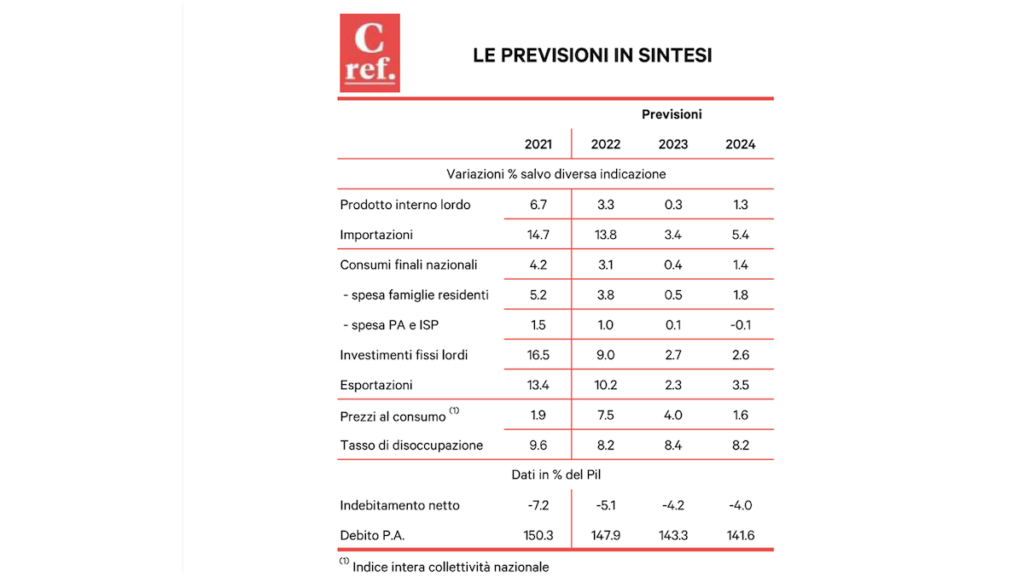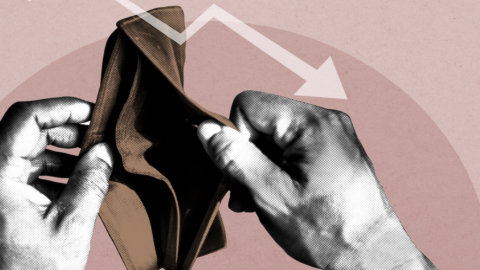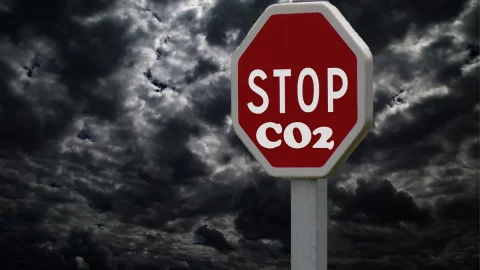Pandemic, energy crisis e central banks. The qinternational economic framework which forms the backdrop to the economic scenario for Italy is characterized by a certain degree of uncertainty, linked above all to the possible evolution of the pandemic during the winter and to the war in Ukraine which shows no signs of rapid resolution, mainly by virtue of the consequences for the European energy market. The extraordinary increase in the price of gas in Europe, like inflation, are elements of risk that condition the world economy and the choices of central banks. This is what emerges from the last one Ref Research report on the Italian and international economic situation.
When price dynamics are completely out of control, central banks find themselves in a difficult situation: in principle they should not counter price fluctuations, to avoid adopting pro-cyclical measures, but in the presence of fluctuations in inflation so marked and sudden, the need to counter possible increases in inflation expectations by raising the cost of money prevails.
The monetary tightening of central banks and its effects
Thus, the consequences of the pandemic and the war in Ukraine have also been added to those of monetary policy of the Federal Reserve. And the effects are visible (dollar exchange rate and stock market trend), therefore, given the deterioration of international financial conditions, the real economy is also affected.
The risks are high. However, a less unfavorable evolution could derive "precisely from a normalization of the conditions on the supply side", explains the report, always if the pandemic this winter "does not lead to new interruptions in the functioning of global value chains, and if the recent reduction in energy prices will be confirmed in the next few weeks, solving upstream many of the problems that are already unloading downstream, on the balance sheets of businesses and households”.
Financial conditions worsen, conditions on the supply side improve
In recent months, the trends in the world economy have been marked by the determined action of the Federal Reserve, which has initiated a series of interest rate hikes. The Fed's policy, combined with the uncertainty surrounding the evolution of the pandemic and the crisis in Ukraine, reduced the risk appetite of the markets and strengthened the greenback. Many economies, to avoid entering one inflation-devaluation spiral, have countered this trend by in turn raising interest rates. Thus began a phase of simultaneous increases in interest rates by the central banks of almost all the major economies. Rising interest rates and uncertainty about prospects in turn penalized the performance of the stock markets, contributing to a further worsening of international financial conditions, thus leading to a slowdown in international demand.
Rate hike to fight inflation
The change in the monetary policy regime was accelerated by the surge in inflation that characterized the world economy over the past year. Inflation has reacted in many countries to the impulses deriving from the trend in commodity prices and from the difficulties in the functioning of global value chains. It was a major shock, which in the case of European countries was accentuated by the outbreak of war in Ukraine and by the energy crisis.
Relative stability of inflation expectations
In most countries the so-called "second round effects" are now manifesting themselves consequences of cost increases especially of energy and other raw materials on the prices charged by companies. There is also an open debate on the possibility of a phase of rising inflation expectations, following the higher current inflation. For now, expected inflation has remained in line with central bank targets. The relative stability of inflation expectations is also a result of the decision with which the Fed has reacted to price increases in recent months.
Rate hike to weaken the appreciation of the dollar
Compared to other phases of US monetary policy reversal, the current one is characterized by the large number of countries that are raising interest rates, also with the aim of limiting theappreciation of the dollar exchange rate. It follows that the degree of tightening of financial conditions is probably already significant, as the performance of stock exchanges over the last year seems to suggest.
Pandemic and energy crisis are now returning?
A point that however remains limited in the debate, according to the Ref researchers, is that the factors at the origin of the price shocks – pandemic and crisis of the European gas market – are returning. On this point there are still many margins of uncertainty; however, the prices of many raw materials, as well as those of maritime transport, give clear and unequivocal signs of withdrawal. The same trend is manifesting itself on the energy markets: in the case of Petroleum the OPEC countries have already intervened to limit the drop in quotations, while in Europe the European gas prices they have more than halved from their August highs.
A phase of weakening of international demand is expected
Naturally, since these are trends that can respond to future evolutions of the pandemic and the war in Ukraine, the margins of uncertainty remain high; however, the deceleration in demand induced by monetary policies could also turn out to be excessive in a context of normalization of conditions on the supply side, thus leading to the postponement of what otherwise would be a spontaneous recovery of the global economy.
In fact, the economic indicators are retreating in many countries. At least in the short term, in the quarters between the end of 2022 and the beginning of 2023, a demand weakening phase international appears obvious.

Italy: an anomaly but this time a positive one
In this scenario, the Italian economy has exceeded pre-Covid production levels with an overall trend no worse than that highlighted by our major European partners. The alignment of the Italian economy in terms of growth with the performances of France and Germany would not be a significant point, were it not for the fact that in these three years a long period has been interrupted, which lasted over twenty years, in which Italy always grown less than the rest of Europe.
In any case, two and a half years are too short a time to recognize the symptoms of a structural change, also because recent trends have been greatly conditioned by sectoral specificities that have influenced the different economies in an asymmetrical way. In particular, the Italian economy is the least exposed in this phase to the difficulties of the automotive sector. Furthermore, our recovery has drawn a fundamental impulse from the construction sector, linked to the 110% super bonus, the cost of which for public finances makes it non-repeatable for long with this size of incentives.
But still many knots to untie
In conclusion, although there are some signs of improvement in the relative performance of the Italian economy, many problems remain to be resolved. The agenda of next Government is already full of issues to address, first of all that of managing the gas supply emergency. In the background, a financial context characterized by a change in the monetary policy regime, already marked by the widening of Italy's spread.





